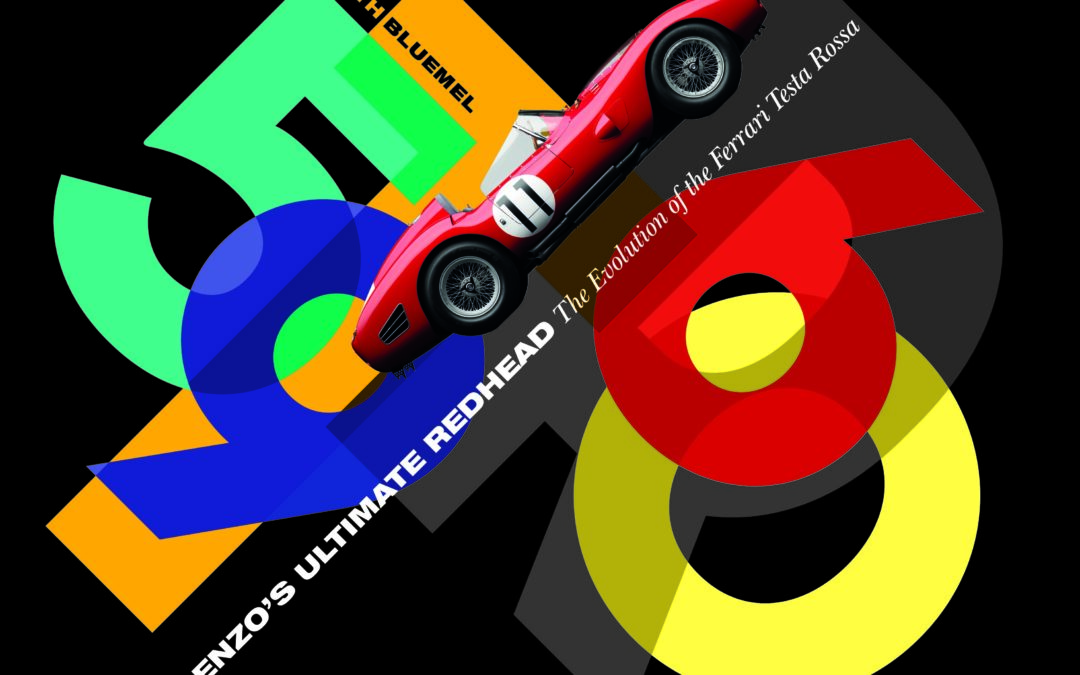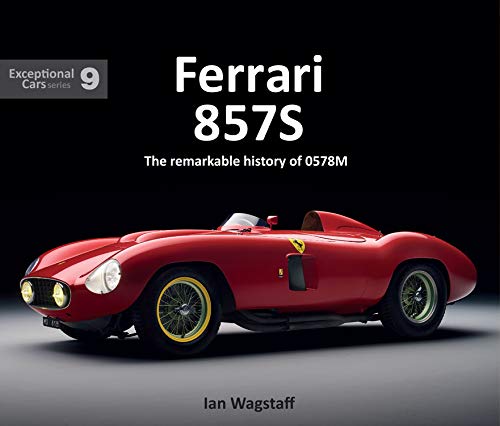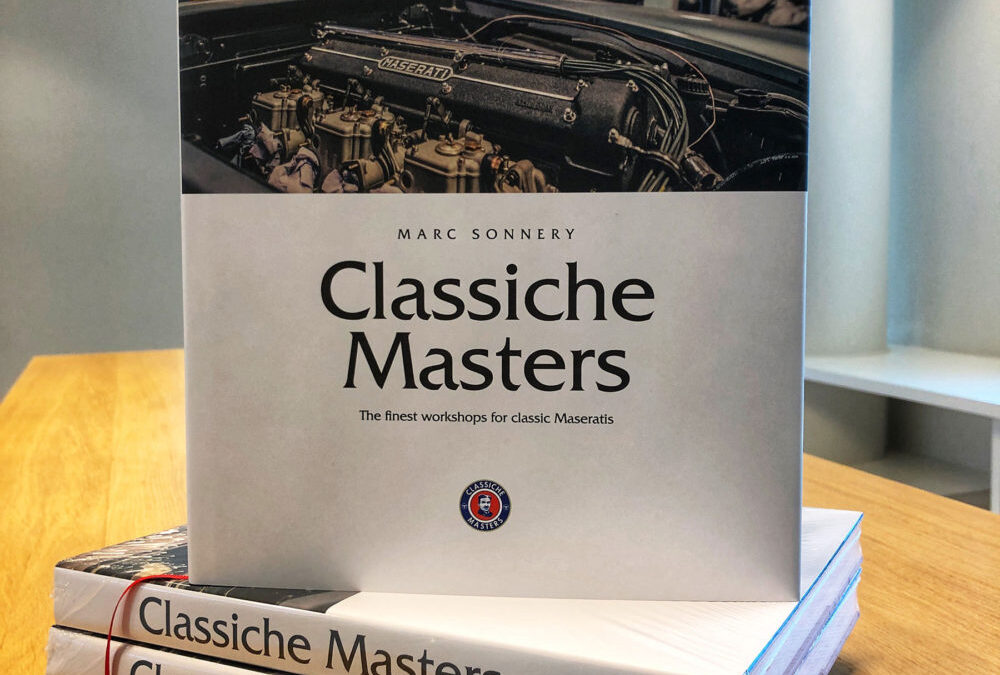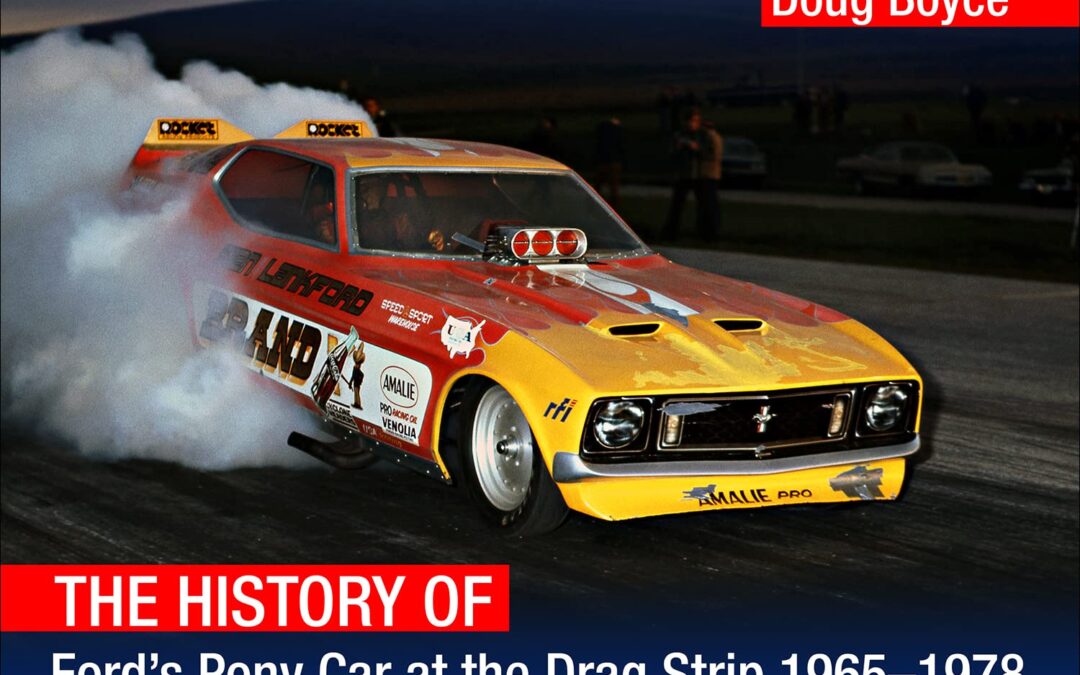
Blast down the quarter mile in the first two generations of Ford’s legendary pony car across all drag racing classes in Quarter-Mile Mustangs!
Since first becoming a mass-market success in mid-1964, the Ford Mustang has made millions of passes down the quarter mile on sanctioned drag strips. With styling flared toward the youth, aftermarket parts manufacturers saw an enormous opportunity to produce go-fast components to aid in propelling Ford’s pony car down the 1320. The success of these cars was immediate.
In the hands of successful and seasoned pros, such as Gas Ronda, Bill Lawton, and Dick Brannan, Ford unleashed the devastatingly potent 1965 A/FX Mustang fastback, which was built by Blue Oval stalwarts Holman & Moody with the 427 SOHC (Cammer) engine that unleashed havoc on mother Mopar.
From those very first factory drag cars through the fabled 1968-1/2 Cobra Jets, drag racing historian Doug Boyce highlights the many successes of pioneers, such as “Dyno” Don Nicholson, Les Ritchey, Phil Bonner, Hubert Platt, and Al Joniec. However, it’s not just all doorslammers. As A/FX transitioned into Funny Car, a whole new chapter in Mustang drag racing was written with Mickey Thompson taking the reins and steering Mustangs to success throughout the late 1960s and early 1970s.
The muscle car-era Mustangs joined the Mustang II and soldiered on the best they could as ever-changing rules hampered Ford’s new pony body, with drivers Bob Glidden and Nicholson trying to squeeze every bit of performance out of the diminutive pony.
Quarter-Mile Mustangs: The History of Ford’s Pony Car at the Drag Strip 1964-1/2-1978 brings forth the most in-depth coverage of these cars at the drag strip. Don’t get caught sleeping at the light!
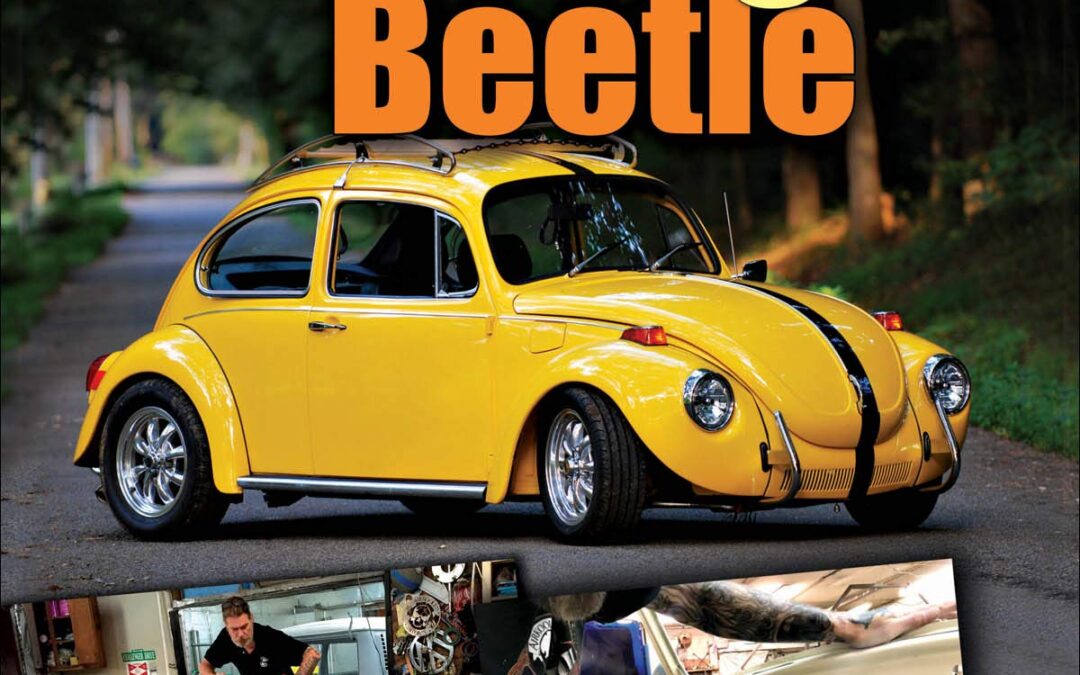
It’s about time a thorough, hands-on restoration book has been authored by authorities who know the Beetle like the back of their hands. With this book, you will have everything you need to bring your old or new Beetle project back to life.Perhaps the most charismatic automobile ever, the Volkswagen Beetle was the longest-running, most-manufactured automobile on a single platform of all time. From 1938 to 2003, more than 21.5 million “Bugs” were assembled, distributed, and sold on nearly every continent in the world.
Throughout the Beetle’s successful run, many of these cars have been relegated to project car status due to their age or condition. Airkooled Kustoms, a VW restoration shop in Hazel Green, Alabama, brings its expertise in restoring these cars to book form with this all-encompassing compilation. Restoring your Beetle is covered through step-by-step sequences from unbolting that first nut through polishing the paint on your freshly restored Bug. The specialists at Airkooled Kustoms walk you through the proper disassembly methods, restoring versus replacing components, and reassembling your restored Bug, covering everything related to the body, undercarriage, and interior along the way.
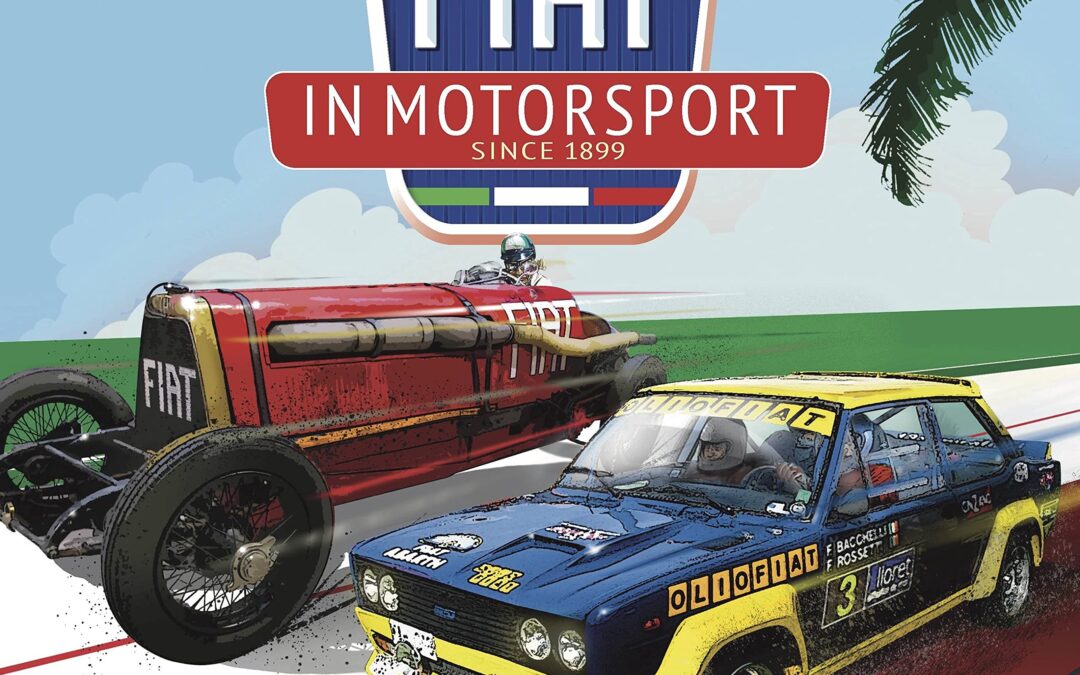
FIAT in Motorsport is an in-depth look at Fiat’s historical and prestigious involvement in all forms of motorsport. The achievements of the cars and drivers are described in detail, along with many original photographs, sourced from the official Fiat archives.
In the early days, before the First World War, Fiat was a major contender in Grand Prix racing, and employed many of the leading drivers of the era. Although it withdrew from Grand Prix racing in 1927, Fiat cars were still to be seen participating in high-profile races, such as the Mille Miglia. In these events most Fiat models were sports editions of the highly successful ’Balilla’ range. In 1952 the introduction of the sensational 8V coupé resulted in many racing successes in private owners’ hands, while the late 1950s saw the introduction of ‘Formula Junior’ class of racing and Fiat-engined cars were very successful in the early years.
In the 1970s, Abarth, then owned by Fiat, successfully ran the rally team, which resulted in three World Championships. Speed record attempts over the years are also detailed in this fascinating history of Fiat’s sporting achievements
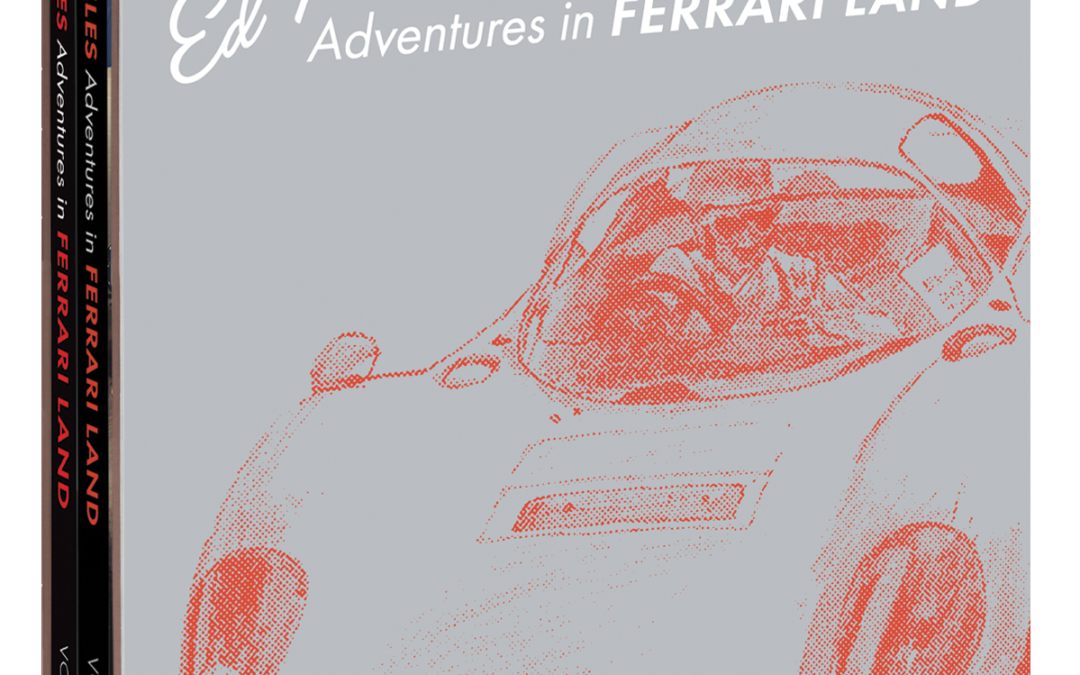
The greatest vintage Ferraris carry stories with them, and part of the value of each unique car is the depth and richness of its history. Edwin K. Niles has been buying and selling Ferraris for most of his life, and the more than one hundred that passed through his hands include some of the most storied and rare examples in existence.
This lavish two book set covers the cars and writings of Niles, offering Ferrari enthusiasts an intimate look into the heritage of some of the world’s most desirable collectible Ferraris.
In Volume 1, Niles recounts his encounter with each car, touching upon the its history and including colorful stories such as how he discovered a 1954 250 Europa Coupe in an underground storage garage while on holiday in Italy and bought it immediately after the owner took him on a screaming ride through the narrow streets of Rome.
The stories of Ed and his cars take you on a ride through Ferrari history, meeting the historians, collectors, and celebrities who live and breathe the cars that bear the prancing horse.
Volume 1 of this set includes a complete inventory of all the Ferraris owned by Niles, with archival photography, drawings, records, and entertaining stories about each one.
Volume 2 collects Niles’s writings about Ferrari, including his colorful column, “Oldtimer’s Corner,” that ran in the FCA Southwest Region’s Sempre Ferrari. Included on those pages, are accounts of a ring of Italian car counterfeiters, the Berlinetta in the barn, the ill-fated but fast Dino, and more tales of living and loving Ferrari.
In short, if you love and live Ferrari, this two-volume set is a must.
2 Volumes in slipcase
372 Pages
12 × 12 × 3.5 in
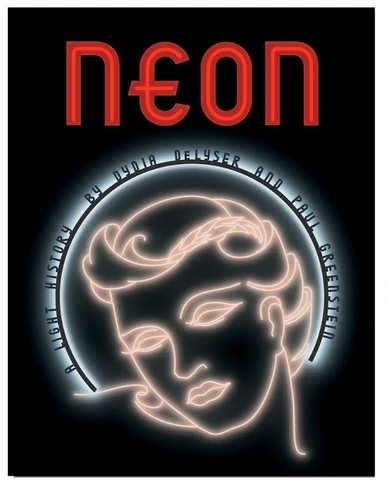
SIGNED
Since the late nineteenth century neon signs have inspired devotion and derision, drawing people to them and transforming the American landscape in the process. In Neon: A Light History Dydia DeLyser and Paul Greenstein unite the approaches of scholar and signmaker in the first book to detail neon’s rich history and geography from the inside. Lavishly illustrated and invitingly designed, this short book’s compellingly written expert analysis dispels long-held myths and misunderstandings about the inventors and technologies, the art and commerce, and the cities and communities that have made neon signs such iconic parts of the American landscape.
Revealing neon signs as active agents in sweeping cultural, economic, and political changes nationwide, DeLyser and Greenstein introduce readers to inventors and “tube benders,” business owners and customers, politicians and passersby, sign detractors and sign afficionados, architects and restoration specialists—a compelling cast of characters, many of whom, they show, continue to keep neon vibrant today. Taking readers inside the signs themselves, the authors show how each sign, whether historic or contemporary, is made by skilled hands—today just as they were over one hundred years ago.
Drawing from over a decade of in-depth archival and ethnographic research as well as more than four decades of experience in the sign industry, DeLyser and Greenstein use Los Angeles—not New York or Las Vegas—as focal point, showing how neon signs have catalyzed urban change, and how they continue to hold appeal for our changing communities—developing with the automobile and car-and-consumer culture in the twentieth century, expanding from cities to towns, and along highways to remote roadside outposts. From the earliest luminous tubing in the 1890s to the artistic creations of today, from community-funded restorations of historic signs to ordinary-seeming business signs that have become community icons, DeLyser and Greenstein show how, just as neon signs lit our past, they can now light our shared future.
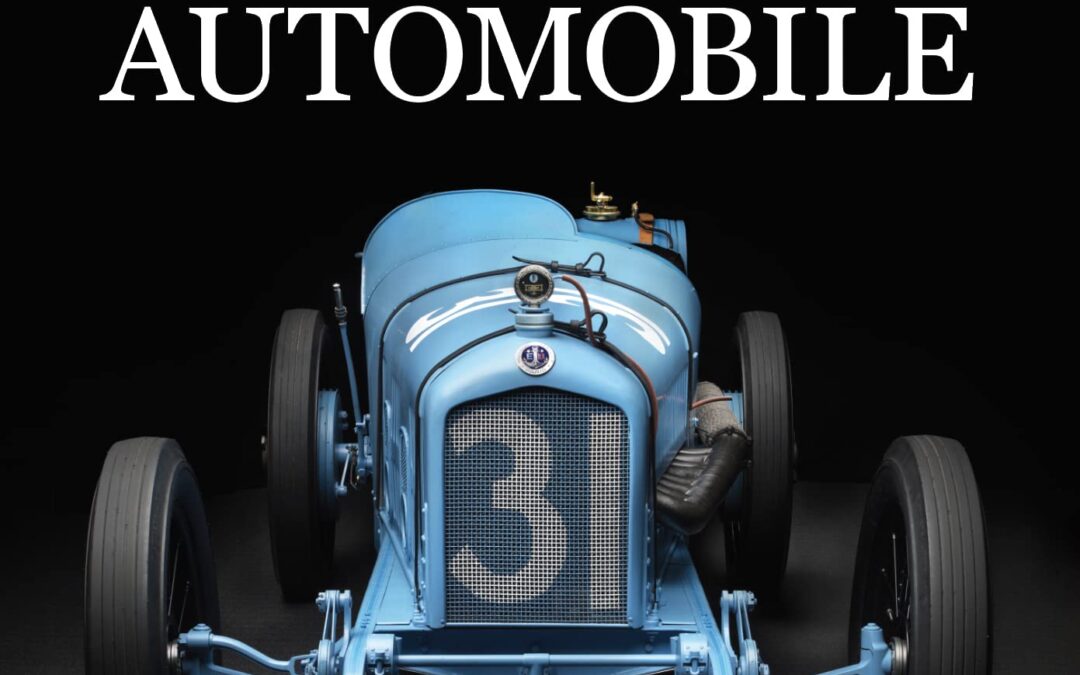
In the last one hundred years, cars have shaped our lives. Other everyday cultural artifacts, such as watches, telephones, musical instruments, and televisions, have certainly had influence, but the car is by far the most significant. Now, change is coming for the car, as it is for so many other industrial artifacts. Once, cars were distinct machines. Now, they are evolving into multifunctional digital devices. New fuels, new modes of travel, and new technologies are disrupting the traditional role of the much-loved family car.
What is to become of this material legacy? Should we really let go of it? Without memory, personal and shared, we lose our way, our individuality, and our culture. This proposition is at the heart of The Archaeological Automobile.
Miles C. Collier’s landmark approach uses an “archaeological mindset” to interpret the automobile as a cultural artifact in six themes:
The Development of the Automobile describes how the car emerged from a pressing human need for mobility, tracing our relationship with horses, our invention of the bicycle, and how we turned our backs on both as daily transport for the allure of the car.
The Rise of the Collectible Automobile asks how and why ratty relics decaying in recycling yards can become valuable and treasured collectibles. It reveals the effect of cultural influences on our perception of cars and on the dynamics of the collector car market.
The Archaeological Mindset picks up a wrench, gets into the workshop, and tracks the restoration of a 1919 Ballot Indy car using hands-on experience and background research while deploying the “archaeological imagination.” The archaeological clues are in the detail.
Collecting and the Archaeological Automobile deals with the characteristics of collecting. Why do we accumulate “stuff”? Is it greed? Is it passion? Is it a desire for legacy? And what makes a “good” collection? Is it bling? Is it style? Is it material worth? The answer lies in connoisseurship.
Restoring the Archaeological Automobile debates the merits of diverse restoration strategies and the reasoning behind them, including the tricky question of how to repaint the tilt-front nose of a 1964 Alfa Romeo GTZ racing car and still preserve the evidence of forty years of accumulated sandblasting and chipping.
The Archaeological Automobile of the Future is a call to action. Cars as we know them are customarily trashed, government regulations encourage indifference, and the skills and knowledge associated with fixing them are slowly vanishing as we lose older generations of experienced craftsmen. How can we preserve humanity’s treasure trove of automotive knowledge for generations to come?
Filled with engaging stories and practical examples, this is a handbook of the most thoughtful practices, not just for automobile owners and the historical car industry, but for collectors, professionals, and users of all kinds of industrial era artifacts.
The Archaeological Automobile combines scholarship, pertinent anecdotes, style, and experience to provide a stimulating account of why we should all be archaeologists now.
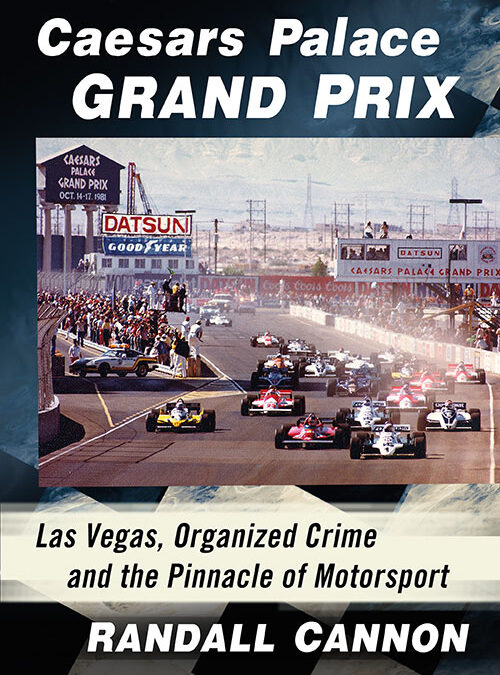
Las Vegas, Organized Crime and the Pinnacle of Motorsport
The path of Grand Prix racing in America wound through raceways at Sebring, Riverside, Watkins Glen, Long Beach, and finally Caesars Palace in Las Vegas. At each stop, the influence of organized crime seemed no more than a handshake away. But at Caesars the vast crime syndicate appeared deeply involved in the operations of the luxury-branded resort. The Caesars Palace Grand Prix then culminated in an unholy alliance of the world capital of gambling, shadowy figures, and the international czar of Formula One.
During its four-year run of successive Formula One and CART IndyCar events, the race hosted the biggest names in motorsport–Mario Andretti, Bernie Ecclestone, Roger Penske, Chris Pook, Alan Jones, Nelson Piquet, Niki Lauda, Danny Sullivan, Bobby Rahal and Al Unser among them. The podium celebration of the inaugural Grand Prix put the convergence of alleged organized crime influences and auto racing on public display, while the years that followed provided their own curiosities. This book traces the intertwined threads through decades of accounts, extensive interviews, and the files of the FBI.
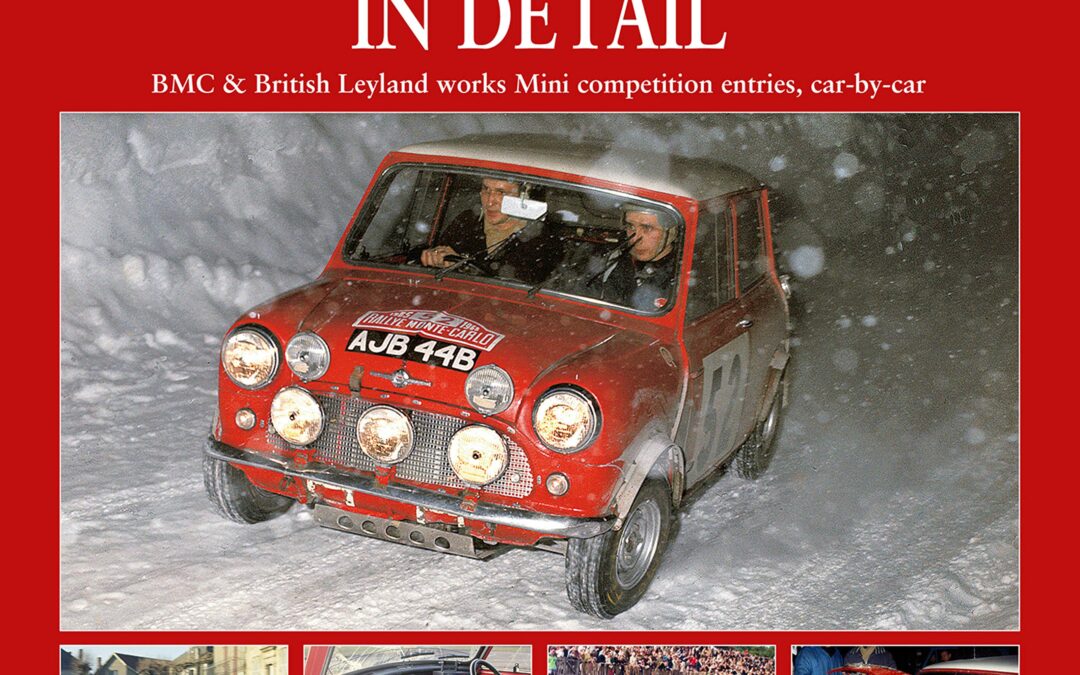
The works Minis had a long and distinguished competition history between 1959 and 1970, when British Leyland bosses closed the Abingdon Competition Department. The car started its competition career chasing class awards with the diminutive 850cc Mini, but once race car designer John Cooper persuaded BMC that they should build a hot version, the Mini Cooper was born and things moved up a gear.
With the introduction of the Mini Cooper S, the car soon became a world beater. Winning the 1964 Monte Carlo Rally in the hands of Paddy Hopkirk was a watershed moment which the Abingdon team repeated three times. During that 11-year period, 77 works Minis were built, competing in more than 300 events, most of them international rallies. The 1969 season, when the works Minis went racing, is also covered, along with the rallycross events.
Works Minis in Detail covers each one of those 77 cars which, in their distinctive red and white paintwork, were a force be reckoned with wherever they competed. Build details of every car are provided, drawn from factory build sheets, with information also on when cars were reshelled and identities swapped. The details of the events entered and the drivers are the result of analysing hundreds of contemporary race and rally reports.
The result is the most in-depth study of the works Minis ever published, made possible by years of research by Robert Young, a lifelong Mini enthusiast. As the Mini Cooper Register’s ex-works registrar, club chairman and for many years archivist, he is well placed to write with authority. A proud owner himself, he has intimate knowledge of the little red cars.
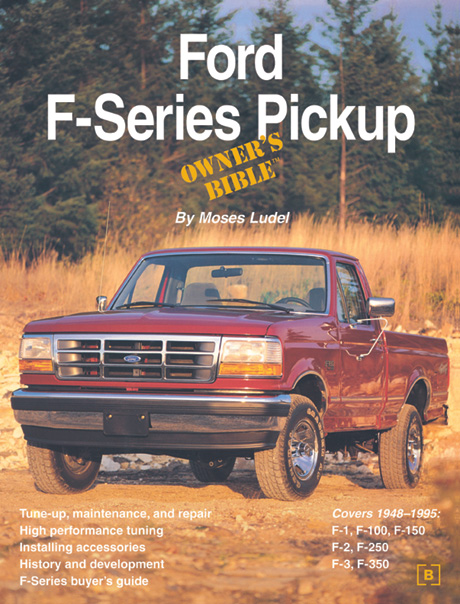
Ford F-Series Pickups are the best-selling vehicles in America, with more than half a million sold every year. Their enduring popularity is due to their unmatched combination of amazing versatility and excellent value.
Author Moses Ludel has written the authoritative companion book for your F-Series pickup. His tips and suggestions cover the full range of F-Series duties and help you get the most from your pickup, whether it’s a farm workhorse, weekend trailer puller, 4×4 trail crawler, rolling office, or daily driver.
High performance modifications, accessories to tailor your Ford to your individual driving demands, F-Series development history, and tips you should know when buying a new or used F-Series are just a few of the many topics covered.
Many F-Series owners take pride in maintaining and servicing their pickups themselves. To help the “do-it-yourselfer,” Moses provides step-by-step instruction backed up with hundreds of photographs that cover procedures from oil changes and basic tune-ups to more complicated engine, transmission, suspension and electrical repairs. With his experienced, hands-on guidance, Moses makes it easy for you to keep your F-Series operating at peak condition.
For the best high-performance tuning information, Moses went straight to the experts-Ford Motorsport. He worked directly with Ford’s Special Vehicle Operations engineers to give you the “hot set-up” for your pickup from cams to camber adjustment.
If you want to know how to buy, drive, maintain, or modify your truck, Ford F-Series Pickup Owner’s Bible™ will show you the way.
Comprehensive coverage of Ford F-Series truck models 1948-1995, including:
- Ford F-1
- Ford F-100
- Ford F-150
- Ford F-2
- Ford F-250
- Ford F-3
- Ford F-350
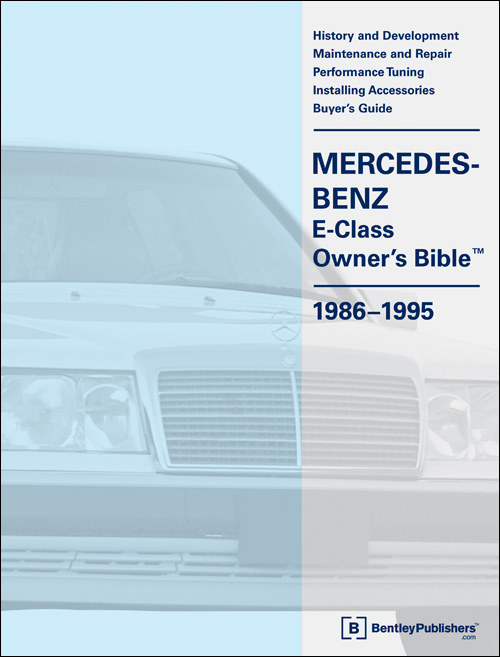
- History and Development
- Maintenance and Repair
- Performance Tuning
- Installing Accessories
- Buyer’s Guide
| The E-Class Owner�s Bible” is an E-class buyer�s guide, maintenance handbook and technical reference source wrapped into one. It is full of tech tips, service hints and system descriptions, plus lots of insightful information about the W124 E-Class chassis.
This book can help steer you through the purchase of your first Mercedes-Benz, provide the information necessary to maintain your E-Class to factory standards, give you the assurance to speak knowledgeably to your service professional and provide you with the hot setup for better road handling.
Models included in this Mercedes-Benz repair manual:
Gasoline engine:
- 260E
- 300E, 300E 2.6, 300E 2.8, 300E 4MATIC
- 300CE, 300CE cabrio
- 300TE, 300TE 4MATIC
- 400E
- 500E
- E320 sedan, coupe, cabrio and wagon
- E420
- E500
Diesel engine:
- 300D Turbo, 300D 2.5 Turbo, 300TD Turbo, E300 Diesel
|
|
The prospective buyer will also find tips on what to watch out for, why a pre-purchase inspection is important and why one model may be preferred to another. Do-it-yourself owners will discover a huge hands-on maintenance chapter to help keep their E-Class at peak efficiency.
Technical highlights:
- Comprehensive maintenance procedures, including HVAC microfilter replacement, brake pad and rotor replacement and engine oil and fluid change procedures listing the necessary tools, tightening torques and fluid capacities.
- Year-by-year analysis of E-Class technical highlights, including the inspiring 500E sports sedan and when the multi-cam M104 engine replaced the M103 single cam workhorse.
- Buying tips on how to get the best car for the least amount of money, things to look for during the test-drive and how having a prepurchase inspection can potentially save you thousands of dollars.
- Seasoned advice on choosing the right repair shop, be it an authorized Mercedes-Benz dealer, an independent specialist or an all makes-all models shop.
- Detailed technical information on vehicle systems, including engines, suspension, drivetrain, body and interior features.
- Performance modifications, including a listing of parts needed to upgrade to the Sportline suspension.
- A brief historical overview of Mercedes-Benz, the world�s oldest car company.
To bring you this authoritative volume, Bentley Publishers has teamed up with Stu Ritter, a 25-year independent Mercedes-Benz repair shop owner/technician and current technical editor of The Star (the magazine of the Mercedes-Benz Club of America).
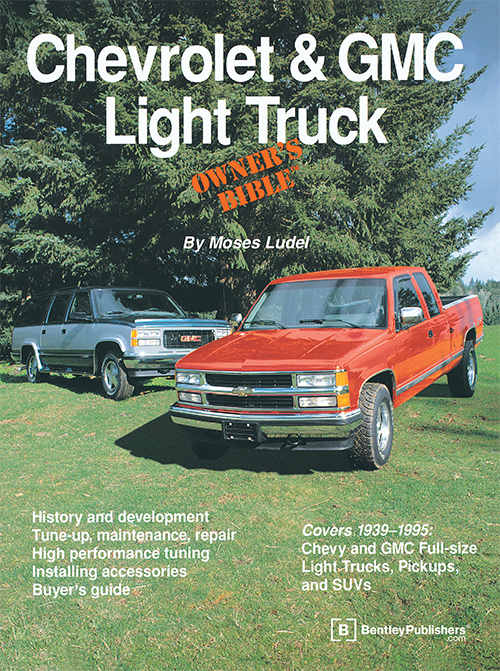
Chevy and GMC Light Truck Models: 1939 – 1995
- Blazer
- C/K to one ton capacity
- Carryall
|
- Full-Size to one ton capacity
- Jimmy
- Sierra C/K to 3500 Series
|
|
A Hands-on Guide to Getting the Most From Your Chevrolet or GMC.
Moses relates the history of Chevrolet’s engineering and technology advancements in the pickup and provides buyer’s guide tips for both new and used trucks. In-depth preventive maintenance and tuning information covers General Motors engines from the classic Stovebolt and Jimmy sixes through the modern TBI V-8s. There’s also a special section that explains how to build a 383 “stroker” small-block V-8 for maximum trailer pulling and off-road power.
These engine modification steps are supported with procedures for upgrading the popular 700R-4 automatic overdrive transmission and manual transmission gear assemblies. Suspension modifications and lift kits are also covered.
If you own a Chevrolet or GMC Light Truck, look no further-this is the essential book for maintaining, modifying and enjoying your truck.
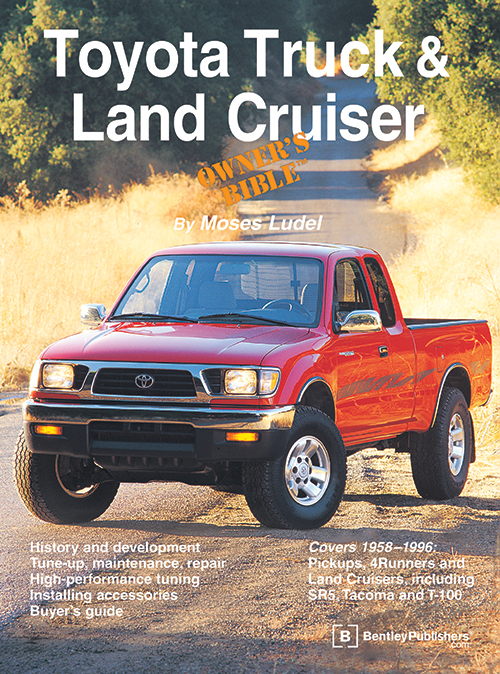
A Hands-on Guide To Getting The Most From Your Toyota.
The Toyota Truck & Land Cruiser Owner’s Bible™ is the authoritative companion book for your Toyota truck, whether it’s a heavy hauling pickup, rugged off-road FJ40, or a new Land Cruiser that’s never left pavement.
Author, veteran truck mechanic and off-road expert Moses Ludel has written the only comprehensive source of information for Toyota Trucks and Land Cruisers-a history, buyer’s guide, service manual, and high-performance tuning book all in one! Discover every aspect of Toyota trucks, from their origins in 1958 to the latest technological advances.
You’ll learn tips for buying the right new or used truck, and which accessories make sense for your needs. Step-by-step procedures with hundreds of photos cover basic maintenance and more complicated work, like tune-ups, valve adjustments, brake jobs and installing aftermarket suspension/lift kits.
Get the hot set-up for your truck, whether you want low-end torque or high-RPM power. Moses gives specific tuning recommendations for engines from the early inline-6s to the advanced 4.5L 24-valve DJ engine. He shares expert insights into the best high performance components and the latest technology from Toyota Racing Development. You’ll also find suspension and chassis modifications, and the best tire and wheel combinations.
Comprehensive coverage of Toyota Trucks and Land Cruisers from 1958-1996,
including:
- 4Runner
- SR-5
- Tacoma
- T-100
- FJ25
- FJ40
- FJ43
- FJ45
- FJ55
- FJ80
- FJ60
- DJ80
- Stout
- Hi-Lux
- Xtra Cab
- Cab and Chassis Models
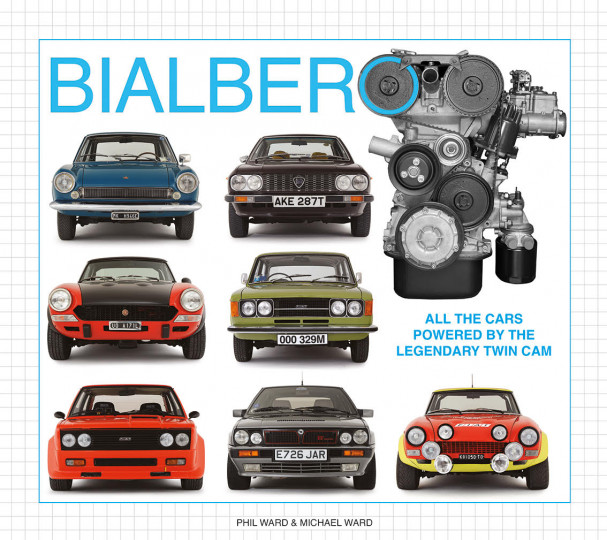
A new 304 page fully illustrated colour book with over 900 photographs, many never before published, based on all the Fiats, Lancias and Alfa Romeos that are powered by Aurelio Lampredi’s superb twin cam engine.
While some elements of the book are an expansion of the earlier works by the same author, the early chapters now include extracts from road tests by Auto Italia’s writers.
Also included in the first part of the book are one-offs and concepts like the Stola Dedica, Lancia Magia and Grama 2
‘Puntograle’, while modified cars include a 180bhp twin cam-engined Lada ‘124’ and a superb Abarth OT1600 tribute.
The second half of the book is dedicated to hands-on maintenance and restoration advice of a selection of popular classic twin cams. There is also the added bonus of invaluable, expert tuning information by the renowned and sadly recently deceased twin cam race engine preparer, Guy Croft.
This much anticipated publication is prolifically illustrated throughout with high quality photography of real world cars from collections and dynamic images from Auto Italia’s archives.
Many of the featured cars are owned by the magazine’s readers, in addition there is also a gallery of restored twin cams from around the world.
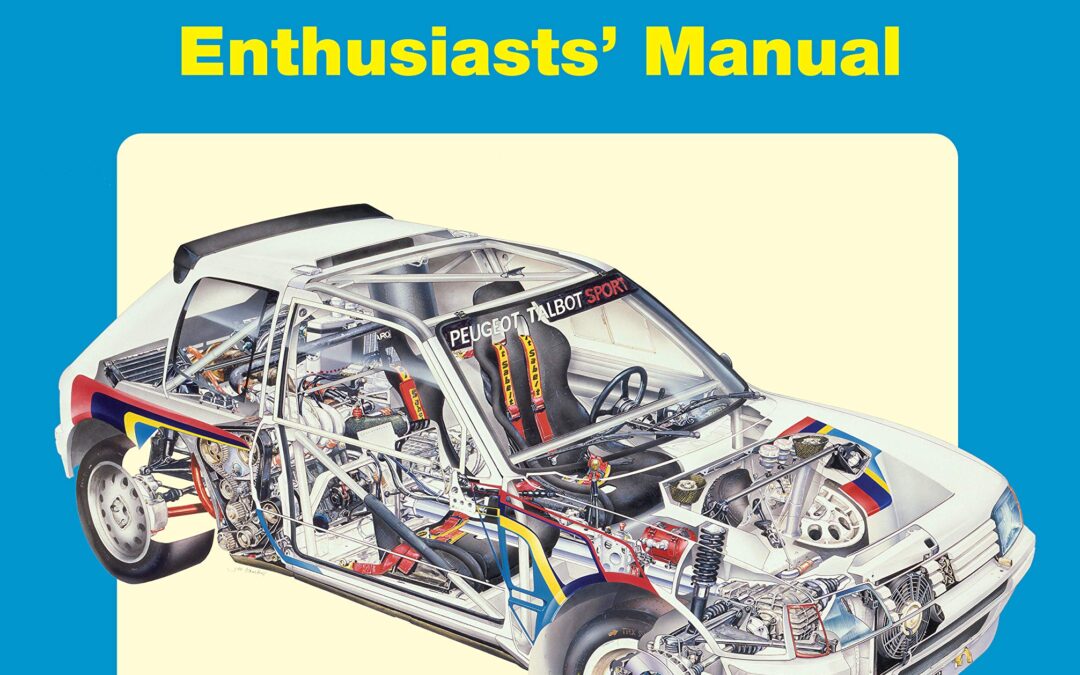
The Peugeot 205 T16 is the legendary Group B turbocharged four-wheel-drive rally car produced by Peugeot between 1984 and 1986. Between 1984 and 1986, 205 T16s won 16 World Championship rallies in the hands of Ari Vatanen, Timo Salonen, Juha Kankkunen and Bruno Saby, and lifted both the manufacturers’ and drivers’ titles in 1985 and 1986 in the hands of Timon Salonen and Juha Kankkunen, respectively, against strong opposition from Audi, Lancia, Ford and Austin-Rover.
The car was used to extraordinary effect by Peugeot as a marketing tool for the 205 road car, and the project lifted Peugeot to become a mainstream manufacturer to rival the established brands worldwide. The original 205 T16 appeared on the rally stages in 1984, while the revised ‘E2’ was introduced partway through 1985. The ‘E2’ incorporated various revisions raising power output to 550bhp.
After the cancellation of Group B at the end of 1986, Peugeot modified three 205 T16 cars to compete in the famous Pikes Peak Hillclimb, and later cars were modified to compete in the Paris-Dakar rally, winning in 1987 and 1988. The car also formed the basis of the ‘405 T16’, which won the Paris-Daker for Peugeot in 1989 and 1990.
Today, the appearance of 205 T16s is always eagerly anticipated at historic rally events, and motorsport retrospectives such as the Goodwood Festival of Speed.
Peugeot 205 T16 Group B Rally Car Enthusiast’s Manual chronicles the design, anatomy and operation of the 205 T16, with input from many of the drivers and engineers involved.

How to Build a Motorcycle leads you through all the key stages – from initially finding the right project for your skill level, to sourcing a base bike and safely taking on some full-on bike-building tasks. With clear, easy-to-follow instructions, proper advice and specially commissioned step-by-step illustrations throughout it is an ideal aid to getting your hands oily. Written by Gary Inman, the co-founder of independent motorcycle magazine Sideburn, and illustrated by Adi Gilbert who is best known for his bicycle and motorcycle drawings whose clients include Harley-Davidson, Guy Martin, Wired magazine, Sideburn magazine and Nike, this is a must-have for all motorcycle lovers.
Read this book, even dip in and out where relevant. If it makes sense, schedule some time, clear your mind, pull on some old clothes, grab your toolbox and get going. The chapters in How to Build a Motorcycle will tell you how to complete a huge variety of tasks that will allow even the greenest of novices to get their hands dirty and start modifying with purpose. If you belong to this camp, start with some of the low-input, high-reward jobs, such as fitting bars, swapping the rear shocks or wiring in a new tail light. Even though these require relatively little work, they’ll transform the look of your bike, and completing them will fill you with confidence to undertake the more difficult jobs, such as fitting more modern front forks or even making your own frame.
The book comes with a glossy 32-page section on finished bikes and is a reference and the perfect gift for all fans, from those who merely like to tinker, to riders taking on a full build.
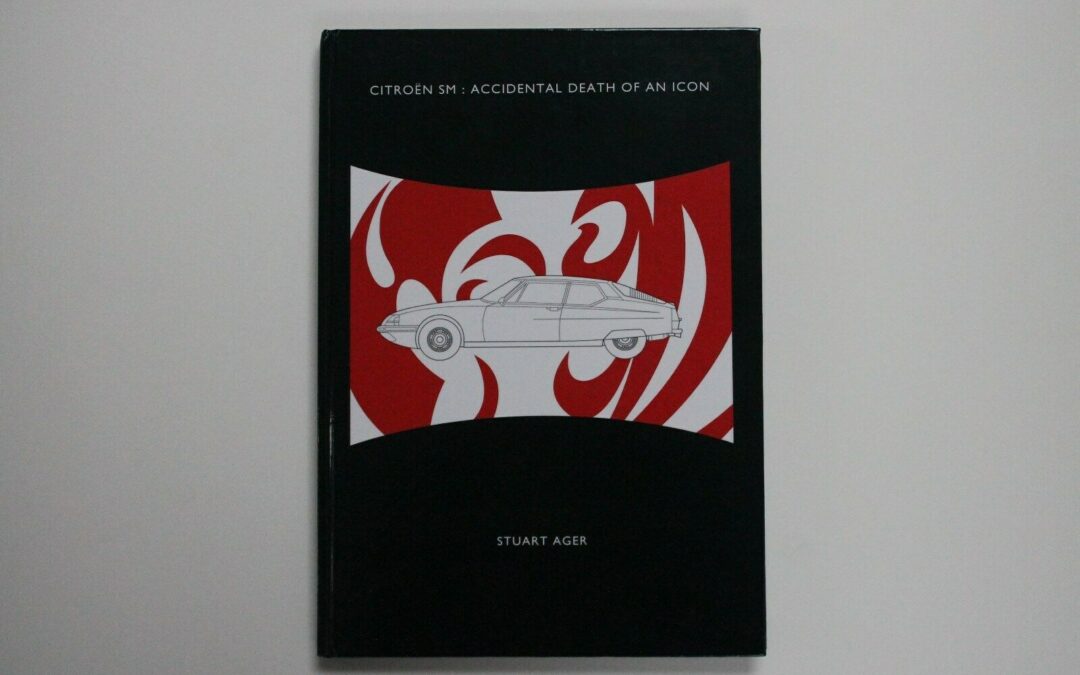
Many books have been written about the Citroen SM, detailing its development, documenting its technological excesses but dodging the circumstances of its demise. How could the most advanced car of its generation be abandoned by its maker, barely four years after its introduction?
Without a satisfactory answer, I began my own investigation. What I uncovered was not at all what I expected. Some of it made me laugh out loud, some of it made me bury my head in my hands with despair, and some of it I found truly shocking. Above all, it was very different from the accepted version of events.”
A book full of original research which sheds new light on what happened to the SM – and what happened to Citroen.
176 pages and richly illustrated in full colour with many specially commissioned images.
Reviewed in Octane Magazine June 2020 by Mark Dixon: “Bonkers but brilliant”
Comments from a few of the first purchasers of the book:
“Bravo! Its awesome”
“It has pride of place on the bookshelf”
“Refreshingly different – superb design & a fascinating read”
“This book is stunning. Well written and my goodness the presentation is brilliant”
“Thank you for the unusual and delightful moments of pleasure whilst reading your book”
“I am so pleased you wrote it. It feels like something that would never have been told otherwise”
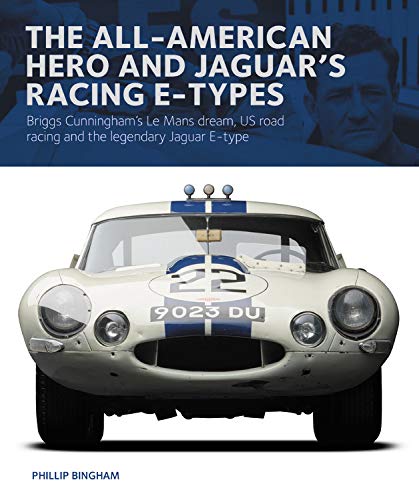
First seen by the wider world at the 1961 Geneva Motor Show, the Jaguar E-type redefined perceptions of how a sports car could – and perhaps should – look. No less a figure than Enzo Ferrari is said to have described it as “the most beautiful car in the world”. Small wonder that demand swiftly exceeded supply after Jaguar initially laid down plans to build the car in relatively small numbers.
It was an instant hit on racing circuits too: little more than a month after the launch, Graham Hill took a roadster to victory on its debut at Oulton Park. Chassis 875027, the focus of this story, was the first E-type campaigned by American racing entrepreneur Briggs Cunningham’s famous team and its performances helped persuade Jaguar to use the E-type as the basis for a competition thoroughbred that has become one of the most coveted of all time: the Lightweight
- The E-type evolved from a distinguished series of Jaguar sports cars that notched up a sequence of victories at Le Mans in the 1950s. The car’s development is covered in detail and illustrated with exquisite cutaways.
- Briggs Cunningham had an interesting tale to tell away from motorsport – as did many of his racing companions. He skippered the winning yacht in the America’s Cup; his right-hand man Alfred Momo won the Targa Florio as a co-driver, aged 14, and later climbed onto the wing of an airborne biplane to repair a leaking fuel line. Their contrasting backgrounds are covered in detail.
- Before aligning with Jaguar, Cunningham harboured hopes of putting together an all-American team capable of winning the Le Mans 24 Hours. His eponymous cars made their mark, without ever quite fulfilling his dream, and feature as part of an engaging wider story.
- In addition to running some of motorsport’s best-known names, including Bruce McLaren, Dan Gurney and Jack Brabham, Cunningham was also associated with several unsung heroes. Here, racers such as John Fitch, Phil Walters and Walt Hansgen receive the credit they deserve.
- The book is handsomely illustrated with period photographs from some of the world’s most respected collections, as well as a gallery of studio photographs showing the car as it is today.







